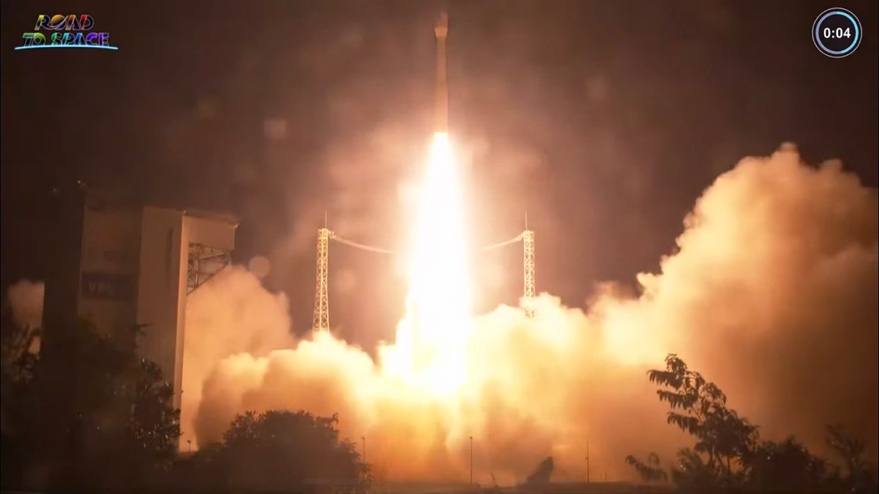
WASHINGTON — The second flight of Arianespace’s Vega C failed to reach orbit Dec. 20 after its second stage malfunctioned, destroying two Pléiades Neo imaging satellites.
The Vega C rocket lifted off at 8:47 p.m. Eastern from Kourou, French Guiana, carrying the Pléiades Neo 5 and 6 imaging satellites for Airbus. The liftoff took place on schedule and the initial phases of flight appeared to go as planned.
However, on-screen telemetry showed that the rocket was deviating the from its planned trajectory within four minutes of liftoff, during the burn of the rocket’s Zefiro-40 second stage. Arianespace said in a later statement that the stage malfunctioned 2 minutes and 27 second after liftoff, seconds after ignition of the stage.
The flight continued for several minutes, including separation of the second stage and ignition of the third stage, as well as payload fairing separation, even as the stage reached an apogee of 110 kilometers and started to descend.
“After the liftoff and the nominal ignition of the P120C, which is the first stage of the Vega, an underpressure has been observed on the Zefiro-40, which is the second stage of the Vega,” Stéphane Israël, chief executive of Arianespace, said on the launch webcast a few minutes later. “After this underpressure, we have observed the deviation of the trajectory and very strong anomalies, so unfortunately we can say that the mission is lost.”
He did not provide additional details about the problem. “We will now have to work with all of our partners to better understand why the Zefiro-40 has not worked properly tonight, triggering the failure of the mission,” he said, apologizing to Airbus Defence and Space, the customer for the launch. Arianespace then terminated the launch webcast.
The launch was the second for the Vega C after a successful inaugural launch of the rocket July 13 carrying a set of institutional payloads. This was the first commercial launch of the Vega C. The launch was postponed from late November because of a problem with the pyrotechnics in the payload fairing separation system.
The Vega C is an upgraded version of the Vega rocket with increased payload performance. Among the changes is the introduction of the Zefiro-40 solid-fuel second stage, which replaced the less powerful Zefiro-23 used on the Vega. Avio is the prime contractor for the Vega C.
The Vega suffered two failures in three launches in 2019 and 2020. A 2019 Vega launch of the UAE’s Falcon Eye 1 imaging satellite failed because of a problem with the thermal protection system on part of the rocket’s second stage. A Vega launch in November 2020 failed when its Avum upper stage tumbled immediately after ignition because of what Arianespace later determined to be improperly connected cables.
The failure of the Vega C deals another blow to European efforts to maintain autonomy in launch. The Vega C was one of the cornerstones of that strategy, along with the still-in-development Ariane 6, with the European Union awarding Arianespace a contract Nov. 29 for five Vega C launches of Sentinel satellites. That contract brought the Vega C backlog to 13 launches, along with two remaining launches of the original Vega.
The launch failure also hurts Airbus, which had counted on the launch to add to its constellation of high-resolution imaging satellites. Pléiades Neo 5 and 6 were similar to the previously launched Pléiades Neo 3 and 4 but included laser links for faster transmission of imagery. An unspecified “equipment issue” with Pléiades Neo 3 led Airbus to file a partial insurance claim after its April 2021 launch. Airbus said the launch of Pléiades Neo 5 and 6 would allow it to work around the issues with Pléiades Neo 3 and meet all its customer commitments.
Article From & Read More ( Vega C fails on second launch - SpaceNews )https://ift.tt/kf80TOw
Science
No comments:
Post a Comment